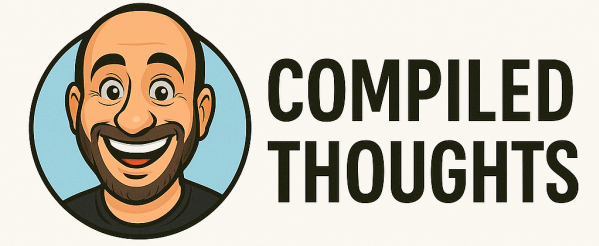Understanding the lifecycle of a user story helps teams deliver value consistently, maintain clarity, and avoid missed expectations. Below, we break down each stage from the initial concept to closure.
1. Concept and Ideation
Every user story begins as an idea. This spark can come from multiple sources:
- Customer feedback through surveys, interviews, or support tickets.
- Stakeholder requests during planning sessions.
- Market research revealing opportunities or gaps.
- Internal brainstorming within the product or development team.
At this point, the story is just a rough idea — not yet ready for development.
2. Story Creation
Once the idea has been validated, the Product Owner (or Business Analyst) writes it using a simple but effective template:
As a [type of user] I want [goal/feature] so that [reason/benefit].
Example:
As a registered user, I want to reset my password so that I can regain access if I forget it.
Alongside the description, acceptance criteria are defined. These are measurable conditions that must be met for the story to be considered “done.”
3. Backlog Refinement
The story is added to the product backlog — the prioritized list of all desired features and improvements. During backlog grooming:
- The story is reviewed for clarity and completeness.
- Large or complex stories (epics) are broken down into smaller, actionable ones.
- Dependencies and risks are identified.
- Priority is set based on business value, urgency, and technical feasibility.
4. Sprint Planning
When the team decides to work on the story, it moves into sprint planning. Here:
- The development team reviews the story’s requirements.
- Effort is estimated using methods like story points or t-shirt sizing.
- The team commits to delivering it within the sprint if capacity allows.
5. Development
With the story in progress, developers:
- Implement the feature according to specifications.
- Collaborate closely with designers, testers, and other team members.
- Write unit tests to ensure code reliability.
- Commit code and integrate it into the main branch.
6. Testing and Validation
Before marking the story as complete, it undergoes thorough testing:
- Functional Testing — Does it work as described?
- Integration Testing — Does it play well with other features?
- User Acceptance Testing (UAT) — Does it meet the expectations of end users?
If defects are found, they’re addressed before moving forward.
7. Review and Demo
At the sprint review, the completed story is demonstrated to stakeholders.
The Product Owner confirms:
- All acceptance criteria are met.
- The feature delivers the intended value.
- Feedback from stakeholders is captured for future improvements.
8. Release
Once approved, the story is included in a release:
- Deployed to production or delivered to customers.
- Release notes and documentation are updated.
- Any necessary training or communication is sent to users.
9. Feedback and Iteration
After release, feedback is collected via:
- Analytics (usage data, performance metrics).
- Direct user comments or support tickets.
- Internal team observations.
This feedback may generate new user stories, creating a continuous improvement loop.
10. Closure
Finally, the Product Owner marks the story as Done:
- All acceptance criteria met.
- No open defects related to the story.
- Documentation updated.
- Story archived for reference.
Summary Flow
Concept → Creation → Backlog Refinement → Sprint Planning → Development → Testing → Review → Release → Feedback → Closure
A well-managed user story lifecycle ensures:
- Transparency in what’s being built and why.
- Faster delivery of valuable features.
- Higher quality through clear criteria and continuous feedback.
- Better alignment between customer expectations and delivered solutions.
---
config:
theme: neo
layout: elk
---
flowchart TB
subgraph Ideation["Concept & Ideation"]
I1["Collect inputs: users, stakeholders, research"]
I2["Capture idea in backlog raw"]
end
subgraph Authoring["Story Creation"]
C1["Write user story<br>As a [user], I want [goal] so that [benefit]"]
C2["Define Acceptance Criteria"]
C3["Attach refs: designs, links, notes"]
end
subgraph Refinement["Backlog Refinement (Grooming)"]
R1["Clarify & split (epic → stories)"]
R2["Estimate (points / t-shirt)"]
R3["Prioritize by value & risk"]
R4{{"Gate: Definition of Ready?"}}
end
subgraph Planning["Sprint Planning"]
P1["Select stories for sprint"]
P2["Identify dependencies & tasks"]
P3["Team commits (capacity fit)"]
end
subgraph Build["Development"]
D1["Implement"]
D2["Unit tests"]
D3["PR & code review"]
D4["Integrate (CI)"]
end
subgraph Test["Testing & Validation"]
T1["Functional tests"]
T2["Integration tests"]
T3["UAT (as needed)"]
T4{{"Meets Acceptance Criteria?"}}
end
subgraph Review["Review & Demo"]
V1["Demo in Sprint Review"]
V2["PO Acceptance"]
V3["Capture feedback → new stories"]
end
subgraph Release["Release & Rollout"]
L1["Bundle in release"]
L2["Deploy (CI/CD)"]
L3["Docs & release notes"]
end
subgraph Learn["Feedback & Iteration"]
F1["Monitor analytics & support tickets"]
F2["User feedback"]
F3["Create follow-ups (bugs / stories)"]
end
subgraph Close["Closure"]
Z1{{"Gate: Definition of Done?"}}
Z2["Mark Done & archive"]
end
I1 --> I2
C1 --> C2
C2 --> C3
R1 --> R2
R2 --> R3
R3 --> R4
P1 --> P2
P2 --> P3
D1 --> D2
D2 --> D3
D3 --> D4
T1 --> T2
T2 --> T3
T3 --> T4
V1 --> V2
V2 --> V3 & L1 & Z1
L1 --> L2
L2 --> L3
F1 --> F2
F2 --> F3
Z1 --> Z2
I2 --> C1
C3 --> R1
R4 -- No --> R1
R4 -- Yes --> P1
P3 --> D1
D4 --> T1
T4 -- No --> D1
T4 -- Yes --> V1
L3 --> F1
F3 --> R1
Z1 -- No --> T1
Z1 -- Yes --> Z2

